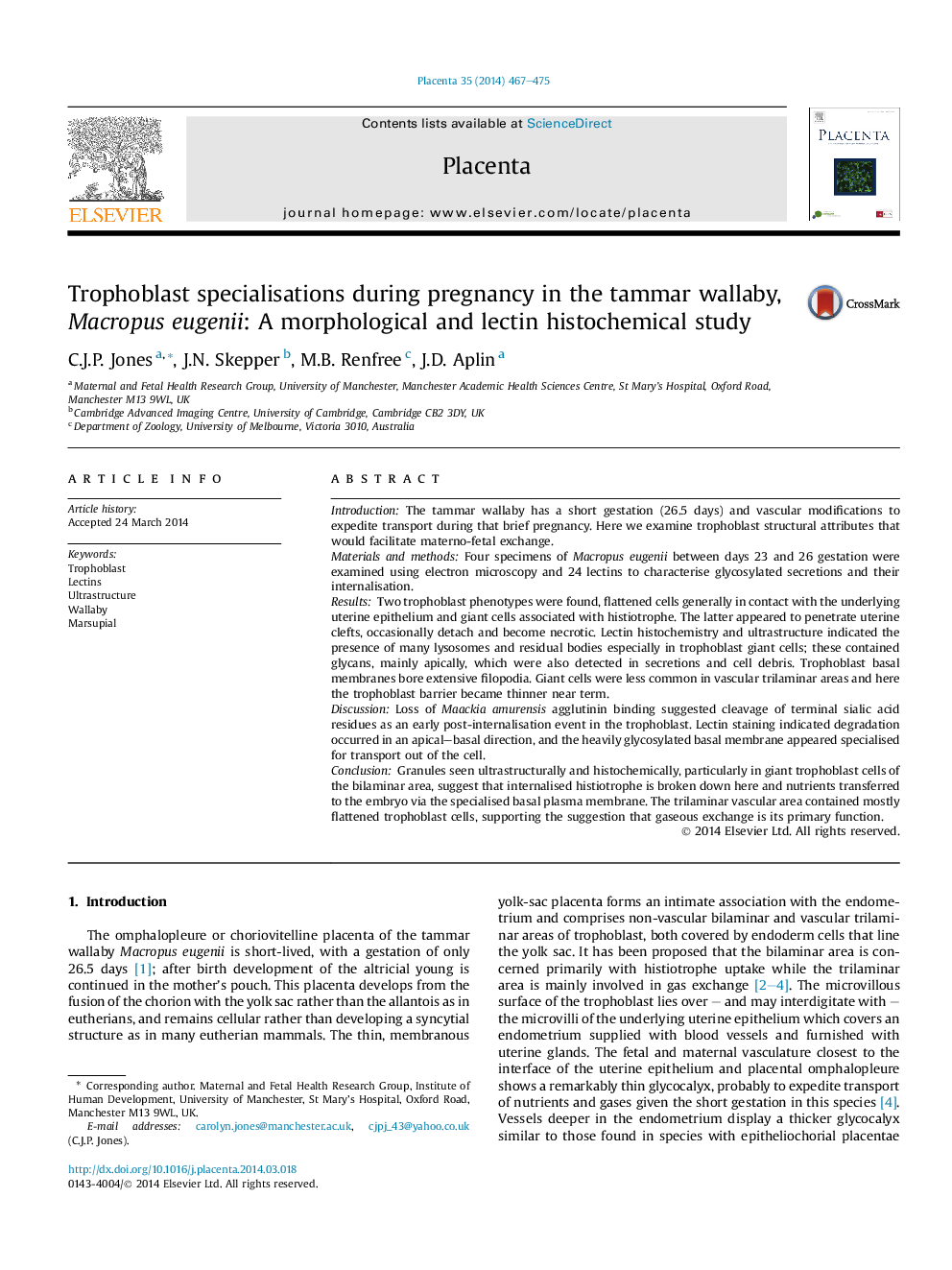| کد مقاله | کد نشریه | سال انتشار | مقاله انگلیسی | نسخه تمام متن |
|---|---|---|---|---|
| 2789042 | 1154466 | 2014 | 9 صفحه PDF | دانلود رایگان |

• Late trophoblast of 4 specimens of tammar wallaby Macropus eugenii was examined.
• Two phenotypes of cellular trophoblast were identified morphologically.
• One was flattened and associated with gas transfer in the trilaminar area.
• The other was a giant cell and associated with histiotrophe uptake and breakdown.
• Giant cells were mainly in the bilaminar area with few in the trilaminar area.
IntroductionThe tammar wallaby has a short gestation (26.5 days) and vascular modifications to expedite transport during that brief pregnancy. Here we examine trophoblast structural attributes that would facilitate materno-fetal exchange.Materials and methodsFour specimens of Macropus eugenii between days 23 and 26 gestation were examined using electron microscopy and 24 lectins to characterise glycosylated secretions and their internalisation.ResultsTwo trophoblast phenotypes were found, flattened cells generally in contact with the underlying uterine epithelium and giant cells associated with histiotrophe. The latter appeared to penetrate uterine clefts, occasionally detach and become necrotic. Lectin histochemistry and ultrastructure indicated the presence of many lysosomes and residual bodies especially in trophoblast giant cells; these contained glycans, mainly apically, which were also detected in secretions and cell debris. Trophoblast basal membranes bore extensive filopodia. Giant cells were less common in vascular trilaminar areas and here the trophoblast barrier became thinner near term.DiscussionLoss of Maackia amurensis agglutinin binding suggested cleavage of terminal sialic acid residues as an early post-internalisation event in the trophoblast. Lectin staining indicated degradation occurred in an apical–basal direction, and the heavily glycosylated basal membrane appeared specialised for transport out of the cell.ConclusionGranules seen ultrastructurally and histochemically, particularly in giant trophoblast cells of the bilaminar area, suggest that internalised histiotrophe is broken down here and nutrients transferred to the embryo via the specialised basal plasma membrane. The trilaminar vascular area contained mostly flattened trophoblast cells, supporting the suggestion that gaseous exchange is its primary function.
Journal: Placenta - Volume 35, Issue 7, July 2014, Pages 467–475